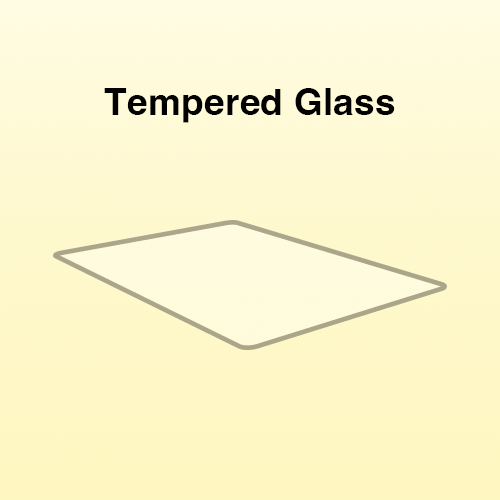Solar Panel Structure: What You Need to Know
Solar photovoltaics, or PV for short, turns sunlight into electricity using clever technology. But what exactly makes up a solar PV system?
Let us look closer into the essential parts of a solar photovoltaic system, breaking down each component and explaining how they work together to bring clean energy to your home. We'll explore the power-generating magic of solar cells, unveil the secrets of the inverter, and shed light on the balance-of-system components that keep everything running smoothly.
Frame
The frame, usually made of aluminum, provides structural support and protects the solar panel from physical damage.
Structural Support: The frame, typically made of lightweight and strong aluminum, holds the solar panel together and keeps it rigid. This is important because solar panels are made of fragile materials like glass and silicon. The frame ensures the panel can withstand wind, snow, and other external forces.
Protection: The frame acts as a barrier, safeguarding the delicate internal components of the solar panel from physical damage during transportation, installation, and operation. It shields the panel from hail, flying debris, and even people accidentally stepping on it.
The frame provides both support and protection, allowing solar panels to function properly and last for many years.
Tempered glass
This protective layer covers the front of the solar panel and shields the delicate solar cells from hail, debris, and other environmental factors.
Impact resistance: Tempered glass is significantly stronger than regular glass. In fact, it can be up to four times stronger [source for tempered glass strength]. This added strength is important because it safeguards the solar cells from hail stones, flying debris, and even the occasional bump during installation or maintenance.
Weatherproofing: Tempered glass is designed to withstand harsh weather conditions. It's resistant to rain, snow, wind, and extreme temperatures. This ensures consistent solar panel performance throughout the year.
High light transmittance: While providing protection, tempered glass also allows a high percentage of sunlight to pass through and reach the solar cells. This ensures that the solar panel can efficiently convert sunlight into electricity.
If tempered glass breaks, it shatters into small, blunt pieces instead of large, sharp shards. This significantly reduces the risk of injury during maintenance or accidental impact.
Encapsulant (EVA) Film
EVA, or Ethylene Vinyl Acetate, is a crucial material that acts like a protective glue sandwiched between the delicate solar cells and a solar panel's front and back layers. Here's a breakdown of its functions:
Encapsulation: EVA forms a transparent layer, essentially encapsulating the solar cells. This provides a strong and durable barrier that safeguards the cells from environmental threats such as moisture, dust, and even physical impact like hail or windblown debris.
Moisture Protection: Moisture ingress can significantly reduce the efficiency of solar cells. EVA acts as a shield, preventing moisture from reaching the cells and ensuring optimal performance.
Vibration Dampening: Solar panels can experience vibrations due to wind or other factors. EVA's slight cushioning effect helps absorb these vibrations, minimizing stress on the delicate solar cells.
Electrical Insulation: EVA is an electrical insulator, which is critical to prevent current from flowing between adjacent solar cells within the panel. This ensures each cell functions independently and efficiently.
Solar cells
These are the fundamental building blocks of a solar panel. They are typically made from silicon wafers and convert sunlight into electricity through the photovoltaic effect.
They are tiny factories that convert sunlight directly into electricity. Here's a bit more detail on how they work:
Semiconductor magic: Most solar cells are made from silicon, a semiconductor material. This means it can conduct electricity under certain conditions. When sunlight hits the silicon wafer in a solar cell, it knocks loose electrons, creating an electric current.
The p-n junction: Solar cells are made with a p-n junction to amplify this effect. This is where two layers of silicon, one with a positive charge (p-type) and the other with a negative charge (n-type), are brought together. The interaction between these layers creates a flow of electricity when sunlight hits the cell.
Here are some additional facts about solar cells:
Efficiency: A solar cell's efficiency refers to how much sunlight it can convert into electricity. Efficiency rates can vary depending on the material used and manufacturing techniques.
Types of solar cells: There are different solar cells, with crystalline silicon being the most common. Other types include thin-film solar cells, which are made from various materials and can be more flexible.
Back sheet
This layer seals the back of the solar panel, protecting the internal components from moisture and dust. It is typically made of weather-resistant polymer.
The back sheet is a critical part of a solar panel. It acts as the outermost layer, sealing the back of the solar panel and protecting the delicate internal components from:
Moisture ingress: Even small amounts of moisture can damage the electrical components within the solar panel, leading to reduced efficiency or even complete failure. The back sheet acts as a barrier, preventing moisture from entering the panel.
Dust and other contaminants: Dust buildup on the back sheet can also reduce the solar panel's efficiency. The back sheet helps to keep dust and other contaminants out.
Besides these protective qualities, the back sheet also needs to be:
Weather-resistant: Solar panels are exposed to the elements for many years, so the back sheet needs to withstand the sun's ultraviolet (UV) rays, high temperatures, rain, snow, and hail. Backsheets are typically made of weather-resistant polymers, such as fluoropolymer (Tedlar) or polyester.
Dielectrically strong: The back sheet must also be a good insulator to prevent electrical current from leaking out of the panel. This is important for safety reasons and to ensure the panel operates efficiently.
Junction Box
This waterproof box houses the electrical connections between the solar cells and the inverter and provides a safety disconnect point.
Here's a breakdown of its functions:
Protection: The junction box is typically made of a weatherproof material like PVC or metal, shielding the electrical connections from rain, dust, and other environmental elements. This is crucial because these connections carry direct current (DC) at high voltage, and exposure to the elements could damage the wiring or lead to electrical hazards.
Housing Connections: The junction box neatly organizes and secures the positive and negative DC cables coming from multiple solar panels. These cables are connected within the box using special connectors.
Safety Disconnect: Most junction boxes include a safety disconnect switch. This switch allows you to quickly shut off the DC power coming from the solar panels in case of maintenance, emergencies, or system shutdown. This critical safety feature prevents electrical shock or damage during servicing.
There are two main types of junction boxes used in solar systems:
Solar Panel Junction Box: This is a small box typically mounted on the back of each individual solar panel. It houses the connections between the panel's output cables and the main solar cable leading to the inverter.
Combiner Box: This is a larger junction box used in systems with multiple solar panels. It houses the connections from all the solar panel strings (groups of panels wired together) and connects them to the inverter. Combiner boxes may also include additional features like surge protection, lightning arrestors, and monitoring equipment.
In short, the back sheet is vital in protecting the solar panel and ensuring its long-term performance.
By understanding the key components of a solar photovoltaic system, you're well on your way to making an informed decision about harnessing the sun's power for your home or business. Now that you've explored these essentials feel free to delve deeper into specific parts or reach out to a solar installer for a personalized consultation!







